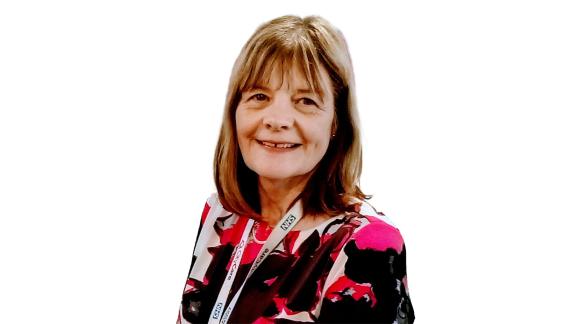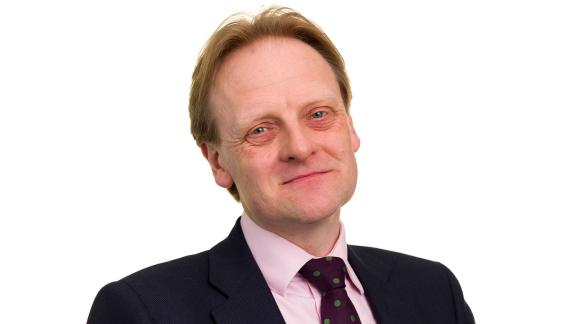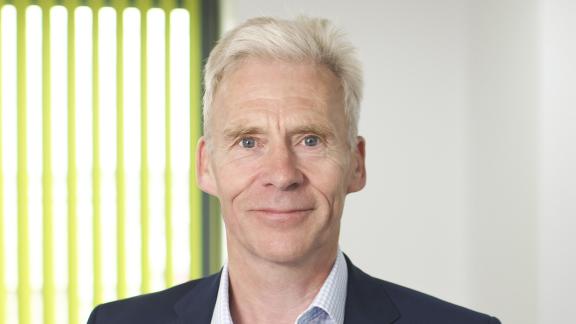Elliot Howard-Jones: 'We need to empower these services across the country'

Celebrating Community Services week is an annual celebration of the role, breadth and importance of community services. For 2024, we spoke to a selection of leaders from the community sector about what makes them proud to work in community services and why it is important they are empowered.
Elliot Howard-Jones is chief executive of Hertfordshire Community NHS Trust, which provides a range of services in the community for adults and children across Hertfordshire, West Essex, Bedfordshire, Luton and Milton Keynes, and East Anglia.
What makes you proud of working in the community sector?
I am particularly proud of working in the community sector. I’ve spent a lot of my time in acute trusts, I've spent some time in mental health trusts, I've also spent some time in the region. By working in all those places I realised that community services were underdeveloped and needed to grow to match the needs of our population.
We've got a growing number of 85-year-olds in the community and we need to respond to those in a radically different way as a health service.
For me, that is about providing support to those people in their home, enabling them, their families and their carers to be able to live in the best way possible that they can.
Increasingly we need to move away from the model that we have had in the health service – providing episodic admission to hospital to address people's needs – to providing real support within the community for them.
I came into community services with a mission to be able to provide that support for people in their home environment.
Could you tell us about some of the positive impacts that your local community-led initiatives have had on the populations you serve?
We have had a real impact in our local communities in a number of different ways, but I will pick up two: one for adults and one for children.
From an adult perspective, look at our Hospital at Home service – which is fully integrated with our integrated community teams, our district nursing and our therapy service, and it has grown massively over the last four years.
We focused heavily on admission avoidance. We focus heavily on a non-pathway model, so we look at the needs of the patient that is being referred to us and how we can keep them away from hospital and supported at home.
Currently we have over two hundred patients in that service on any one day. We receive about 50 to 70 referrals a day for the service and 25 per cent of the people that we have on that are receiving, through our service, IV antibiotics in the community that they would otherwise definitely be in hospital for.
Aside from the numbers which are huge, the feedback that we get from the service consistently is that people are really happy to get this support and this treatment at home rather than having to go into hospital. I think increasingly people want to be able to live with their conditions at home, with their relatives around them , rather than going into hospital.
We noticed a significant change during the COVID-19 pandemic - people were more reticent and more worried about going to hospital. The feedback we get from patients for the Hospital at Home service is universally positive and has a big effect in terms of managing the pressure across the system as well.
From a children's perspective, we have done huge amounts of work in reducing waits for neurodiversity. I think waits for neurodiversity are too long across the country.
It is very difficult when you are on a waiting list for a neurodiversity assessment and your peer group moves away from you when you're in school. I think that's really difficult ground to catch up on. Indeed, many people with neurodiversity do not catch that up.
So I think we need to reduce those waiting times.
I am really proud that we've reduced our waiting times really significantly. We have reduced our waiting times from 120 weeks to about 60 weeks..
Now, I do think 60 weeks is still too long, but it is still half the length of time that people were waiting before and that has a measurable impact on people's lives, not just now, but on their ongoing life chances.
Why do you think it is important that we empower community services?
It is really important we empower community services because we have to recognise that community services receive the same number of referrals from GPs that acute hospitals do. The size of the service is huge.
I often say that our integrated community teams see 38,000 people a month in their service in people's homes, whereas the equivalent number of A&E attendances is 12,000. We are three times the size of A&E in terms of the impact within the community.
We need to need to empower these services across the country to make sure that we can really intervene in people's lives, can really support people's lives at home, to make sure that they don't deteriorate to the point at which they need hospital care.
Some will always need hospital care but there are huge numbers out there that can avoid hospital care.
Our staff see those people daily and are passionate about keeping them people at home. The more power we can give to them to innovate, to make sure that they can really expand the service in the way that it needs to, the more people we can keep at home, the more people will feel supported in their conditions and the less pressure we'll have as a health service.
How can community providers be enabled to go further faster to support Labour's ambitions to shift to a preventative more community-based model of care?
In supporting the ambitions of the government around moves to prevention from treatment and to community from hospital, there's huge amounts we can do and should do as the community services sector.
We need to be really clear to the government about what changes could be made in order to support those two ambitions.
For example, in terms of treatment to prevention, we are running an initiative called -9, which is what happens in the nine days before someone gets admitted to hospital. How can we spot that deterioration in the community using the data we have across existing NHS services, and how can we therefore dispatch a response to that patient to live with those before they get admitted to hospital?
It's really important that we can do that change. How do we organise services to do that? How do we organise our community response to be able to do that? I think that's one area. We need to be more specific about the services we can support.
In terms of the wider question about how we support that government initiative, we need to be really clear across the whole of the NHS about how the system interacts and works with each other to make sure that we get best value across the across the system.
The government policy is really about picking people up before they deteriorate and before their treatment becomes more expensive. For example, we know that if we pick people up early within the community, they can go on oral antibiotics rather than IV antibiotics, which is a better outcome for the patient, but there is also a much better response from the NHS perspective.
Community providers can be supported to do more work by matching the model that has worked quite well in some cases for acute trusts.
There is a proportion of our work that is planned work and there's a proportion that is about urgent escalation. We need to work with the rest of the system on the urgent escalation to make sure that we intervene as early as we can with patients.
On the planning side of it,we need a similar incentive system to reduce waiting lists that our acute services have. For example, if we were paid on a case-by-case basis for children’s neurodiversity, it would incentivise community trusts and all providers of neurodiversity services to do more activity, which I think would reduce waiting times.
The waiting times are too long and it would be helpful to have a similar methodology in community to in the one around outpatients and elective activity.
What is the one key ask that you have of the new government?
The first is we absolutely need to measure children's waiting times in the same way that we do adult waiting times.
At the moment we do not. We do not measure neurodiversity and children waiting for audiology and children waiting for ophthalmology in the same way that we do for adults in adult acute.
That does not highlight the real needs of children that are waiting in the way that they need to be, and does not help us resolve some of the waiting-time problems that we have got.
A system of measuring that and equalising the measuring of that with acutes is essential for what we do going forward.
The second ask is that we really respect and understand community services as a distinct specialty within the NHS.
We need to link with colleagues in primary care – both GPs, with pharmacists, with optometrists in the in the high street – to make sure that our services are integrated and feel integrated for patients.
There is a role for referrals that we get from primary care for more specific services, for more specialist services and for a high intensity of support that we need with some patients to help them maintain their independence in their homes.
I would want the government to recognise that all parts of the system are equally important, are important as a package, but that the community is recognised as a separate specialist package within that, distinctive from primary care because it delivers some very different things to primary care.



